Walk leaders Rachael Mahony, Environmental Education Specialist, from PA Department of Conservation and Natural Resources and Richard Jacob from the WPMC. A group of over 30 people took a guided walk along Grove Run trail hearing about the forest and picking mushrooms. The walk through the forest produced a wide range of species from the tiniest marasmas and slime molds to larger polypores. We returned to the picnic area starting point along the road and picked up quite a few larger Boletes and Amanitas in the clear areas at the side. Pick of the walk for me was the Microstoma floccosum, Pink fringed fairy cup. Even though I walked along the same path as everyone else it was the sharp eyes of one of the junior members on the walk that spotted cup growing on a dead branch and brought a specimen back to the identification table.
A couple of members took the opportunity to explore the area after the main walk finished and added a few more very interesting species. Up at the top of Linn Run road there is a bog in the Spruce flats wildlife area. At the edge of the bog John Plischke III found a Cicada abdomen that was infected with fungal growth. This is very likely to be Massospora cicadina. The Massospora cicadina parasitic fungus has been named the “Flying salt shakers of death” by Angie Macias in an article describing the fungus. The other interesting species found in this area was the Galerina tibicystis (Sphagnum-bog Galerina). Finally we observed that the Mountain Laurel leaves leaves had purple spots on them that was caused by Phyllosticta kalmicola.
With over 60 species found this was a very rich fungal area. According to long time club members it has been over 10 years since the club last walked Linn Run. We are grateful for Rachael Mahony and the DCNR for inviting us to co-host a walk in the area and look forward to returning in the future.
Species list entered by Richard Jacob. Identifications by John Plischke III, Jack Baker and Richard Jacob.
List of species found on the walk at Linn Run State Park:
[icon style=”camera”] Agaricus-abruptibulbus (AKA Agaricus sylvicola),
[icon style=”camera”] Amanita citrina var citrina (),
[icon style=”camera”] Amanita farinosa (Powder Cap Amanita),
[icon style=”camera”] Amanita flavoconia (Yellow Patches),
[icon style=”camera”] Amanita muscaria var. guessowii (Fly Agaric),
[icon style=”camera”] Amanita vaginata var. vaginata (Grisette),
[icon style=”camera”] Amanita velatipes (),
[icon style=”camera”] Artomyces pyxidatus (Crown-tipped Coral Fungus),
[icon style=”camera”] Austroboletus gracilis (),
[icon style=”camera”] Baorangia bicolor (Red-and-yellow Bolete; Bicolor Bolete),
[icon style=”camera”] Bondarzewia berkeleyi (Berkeley’s Polypore),
[icon style=”camera”] Calocera viscosa (Yellow Tuning Fork),
[icon style=”camera”] Cantharellus minor (Small Chanterelle),
[icon style=”camera”] Ceratiomyxa fruticulosa (Coral Slime),
[icon style=”camera”] Clavaria vermicularis (White Worm Coral Fungus),
[icon style=”camera”] Coprinellus micaceus (Mica Cap),
[icon style=”camera”] Daldinia concentrica (Carbon Balls),
[icon style=”camera”] Fomes Fomentarius (Tinder Polypore),
[icon style=”camera”] Galerina tibicystis (Sphagnum-bog Galerina),
[icon style=”camera”] Galiella rufa (Hairy Rubber Cup),
[icon style=”camera”] Gymnopus confluens (),
[icon style=”camera”] Gymnopus dryophilus (Oak-loving Collybia),
[icon style=”camera”] Hygrophorus cantharellus (),
[icon style=”camera”] Hygrophorus marginatus var. concolor (),
[icon style=”camera”] Hypomyces chrysospermus (Bolete Mold),
[icon style=”camera”] Ischnoderma resinosum (Resinous Polypore),
[icon style=”camera”] Lactarius mucidus (),
[icon style=”camera”] Lacrymaria velutina (Weeping Widow),
[icon style=”camera”] Lycogala epidendrum (Wolf milk slime mold),
[icon style=”camera”] Massospora cicadina (Flying salt shakers of death),
[icon style=”camera”] Marasmius rotula (Pinwheel Marasmius),
[icon style=”camera”] Megacollybia rodmani (Platterful Mushroom),
[icon style=”camera”] Microstoma floccosum (Pink fringed fairy cup),
[icon style=”camera”] Morganella pyriformis (Pear-shaped Puffball),
[icon style=”camera”] Mycena haematopus (Bleeding Mycena),
[icon style=”camera”] Mycena inclinata (Clustered bonnet / oak-stump bonnet cap),
[icon style=”camera”] Neofavolus alveolaris (Hexagonal-pored Polypore),
[icon style=”camera”] Peziza badia (),
[icon style=”camera”] Phyllosticta kalmicola (Growing on Mountain Laurel leaves Mycosphaerella colorata),
[icon style=”camera”] Pleurotus ostreatus (Oyster Mushroom),
[icon style=”camera”] Pluteus cervinus (Deer mushroom),
[icon style=”camera”] Polyporus badius (Black-footed Polypore),
[icon style=”camera”] Polyporus squamosus (Dryad’s Saddle, Pheasant Polypore),
[icon style=”camera”] Psathyrella candolleana (),
[icon style=”camera”] Ramaria stricta (),
[icon style=”camera”] Rickenella fibula (Orange Moss Agaric),
[icon style=”camera”] Russula crustosa (Green Quilt Russula),
[icon style=”camera”] Schizophyllum commune (Split Gill),
[icon style=”camera”] Scutellinia scutellata (Reddish Eyelash Cup),
[icon style=”camera”] Stereum ostrea (False Turkey-tail),
[icon style=”camera”] Suillus spraguei (Painted Suillus),
[icon style=”camera”] Trametes versicolor (Turkey-tail),
[icon style=”camera”] Trichaptum biforme (Violet Toothed-Polypore),
[icon style=”camera”] Tubifera ferruginosa (Raspberry slime mold),
[icon style=”camera”] Tylopilus felleus (Bitter Bolete),
[icon style=”camera”] Xanthoconium affine (Spotted Bolete),
[icon style=”camera”] Xeromphalina campanella (Fuzzy-foot),
[icon style=”camera”] Xerula furfuracea (Rooted Collybia),
[icon style=”camera”] Xylaria longipes (),
[icon style=”camera”] Xylaria polymorpha (Dead Man’s Fingers)
Comments:
[icon style=”camera”] Phyllosticta kalmicola (Growing on Mountain Laurel leaves Mycosphaerella colorata),
yellow oyster possibly Pleurotus citrinopileatus (?) but actual name to be confirmed.
Pholiota sp.
Lactarius sp.
Psathyrella sp.
One more unreadable id slip.
Pictures by Richard Jacob
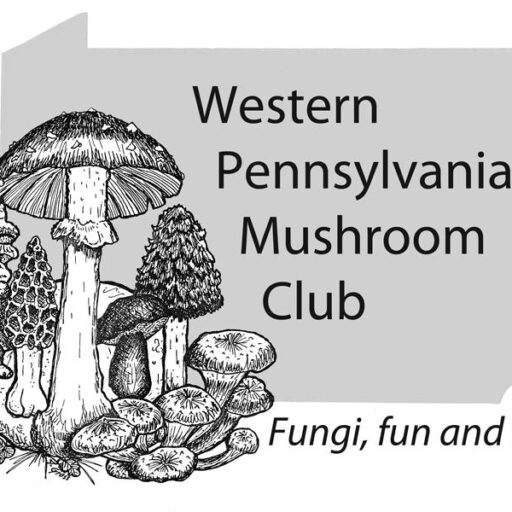
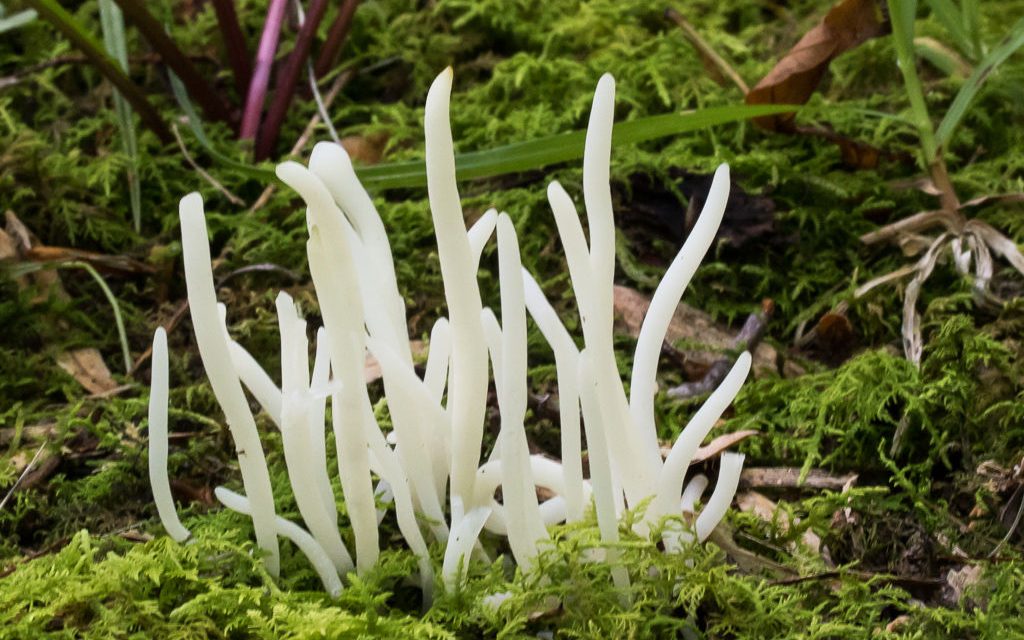




















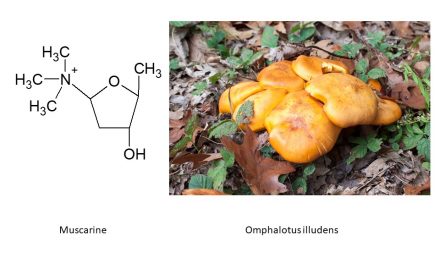
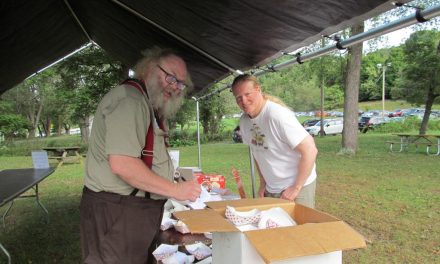
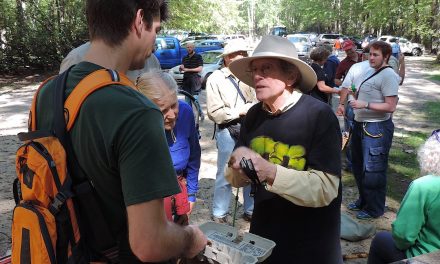
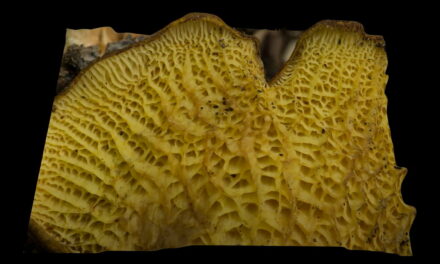

Recent Comments